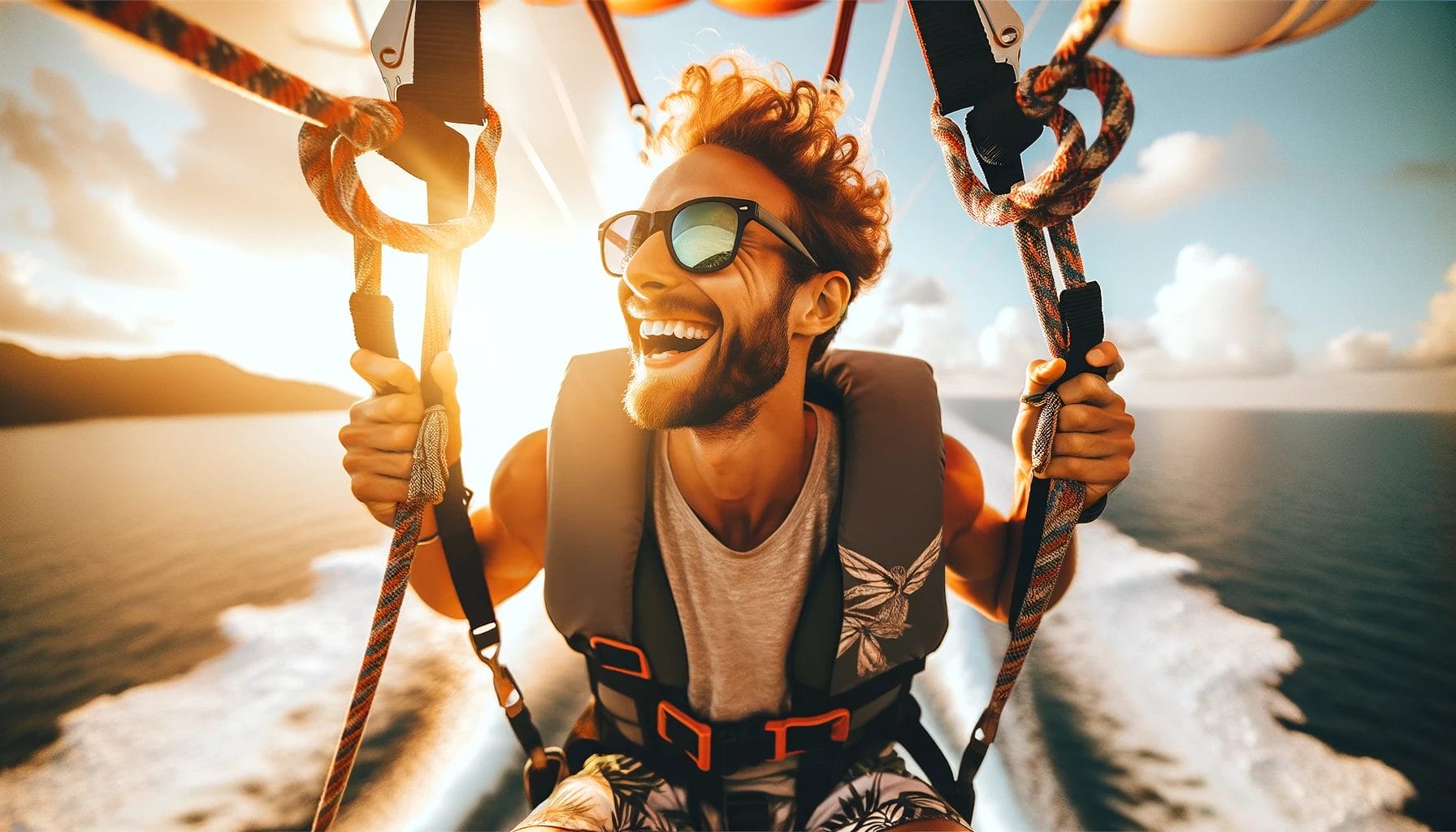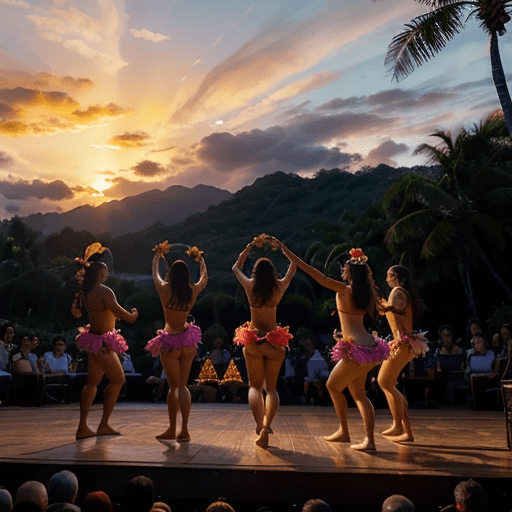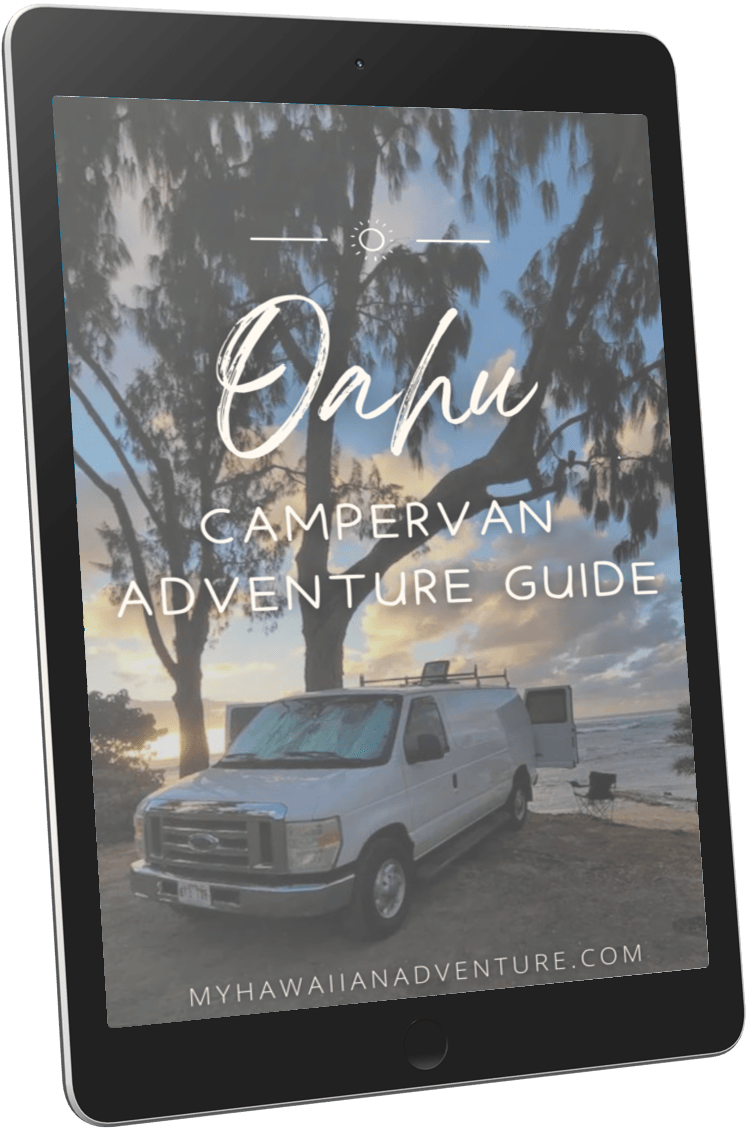If you’re looking for the best waterfall hikes in Oahu, then you are in the right place.
Oahu, the third-largest island in Hawaii, is known for its breathtaking landscapes, turquoise waters, and vibrant culture.
With its diverse range of outdoor activities and experiences, it’s no wonder that Oahu is a dream destination for adventure seekers and nature lovers alike.
In this article, we’ll dive into the best hiking trails in Oahu with waterfalls, so you can plan your ultimate Oahu adventure.
The Top Hiking Trails in Oahu with Waterfalls
Manoa Falls Trail
This 1.6-mile round-trip hike takes you through lush rainforests to the majestic 150-foot Manoa Falls.
The trail is well-maintained, making it perfect for beginners and families with children. Soak in the mesmerizing views of the waterfall, and don’t forget to bring your camera!
Maunawili Falls Trail
Embark on a 2.5-mile round-trip hike to the stunning Maunawili Falls, where you can take a refreshing dip in the natural pool.
The trail can be muddy and slippery, so wear appropriate footwear and be prepared for a moderate challenge.
Lulumahu Falls Trail
This 2-mile round trip hike leads to the breathtaking Lulumahu Falls, a 50-foot waterfall surrounded by lush greenery.
The trail can be a bit challenging, with some steep and slippery sections, so make sure you’re up for an adventure.
Likeke Falls Trail
The 1.5-mile round-trip hike to Likeke Falls is perfect for those looking for a leisurely stroll through Oahu’s beautiful landscapes.
This hidden gem is tucked away in the Ko’olau Mountains and offers a serene escape from the bustling city.
Waimano Falls Trail
Take on the 3-mile round-trip hike to Waimano Falls, where you’ll find a series of cascading waterfalls and pools.
These moderately challenging trail rewards hikers with stunning views and the opportunity to take a dip in the refreshing pools at the end of the hike.

Waterfall Hikes In Oahu: Trail Difficulty Levels and Safety Precautions
Assessing Trail Difficulty
When choosing a hiking trail in Oahu with waterfalls, it’s essential to consider the difficulty level.
Trails range from easy and family-friendly to challenging and strenuous. Assess your physical fitness, hiking experience, and the preferences of your travel companions before selecting a trail.
General Safety Tips
To ensure a safe and enjoyable hiking experience, follow these general safety tips:
- Check weather conditions before heading out.
- Stay on marked trails and avoid shortcuts.
- Wear appropriate footwear and clothing.
- Carry plenty of water, snacks, and a basic first-aid kit.
- Inform someone of your hiking plans, including your expected return time.
- Be cautious when crossing streams or slippery rocks.
Plan Your Hawaiian Adventure Today
Camper Vans | Surf Boards | Kayaks | Snorkel Gear | Itineraries | Campsites | More…
Best Time to Hike
The best time to hike in Oahu is during the dry season, which runs from April to October. During this time, you’ll experience less rainfall and more stable weather conditions. However, keep in mind that Oahu’s tropical climate means that rain can still occur, so always be prepared for changing weather conditions.
The Beauty of Oahu’s Waterfalls
Hiking trails in Oahu with waterfalls offer an unparalleled opportunity to witness the island’s natural beauty.
From towering cascades to serene pools, these waterfalls provide the perfect backdrop for memorable photos and a chance to connect with nature.
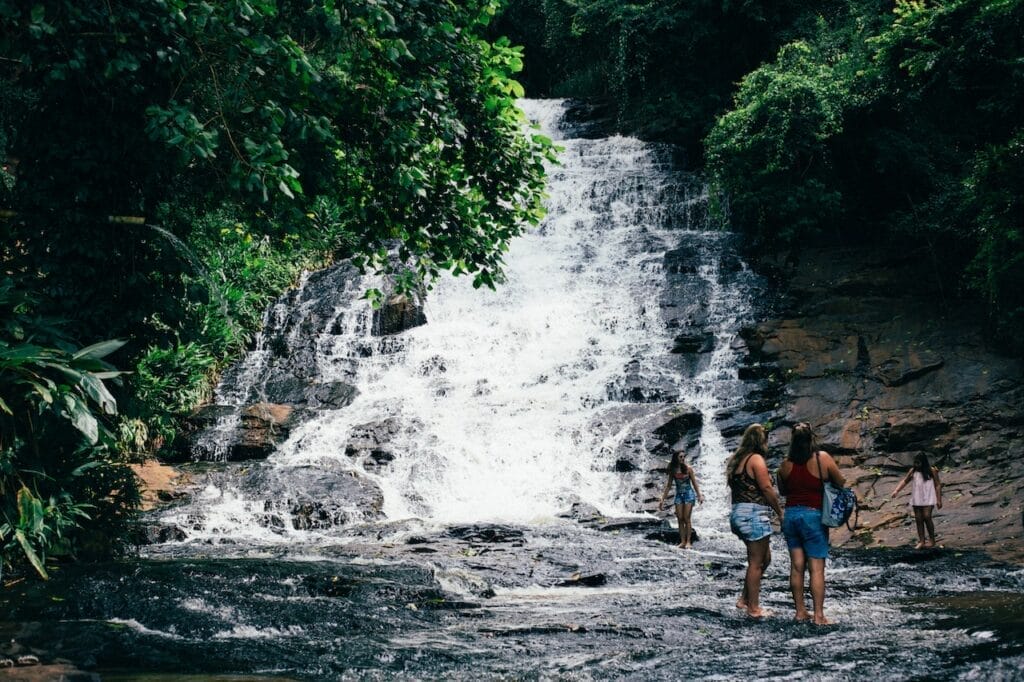
Guided Hiking Tours
For those looking for a more structured and informative experience, consider joining a guided hiking tour.
From short 2-hour excursions to full-day, round Island trips – these are Oahu’s best guided hiking tours.
These tours are led by experienced guides who can share their knowledge of Oahu’s flora, fauna, and culture while ensuring a safe and enjoyable hike.
Here are some of Oahu’s top guided hiking tour operators:

Waterfall Hikes In Oahu: Nearby Activities and Attractions
After exploring the best hiking trails in Oahu with waterfalls, consider visiting nearby attractions and activities to enhance your trip. Some popular options include:
- Surfing lessons on Oahu’s famous North Shore
- Exploring the historic sites of Pearl Harbor
- Snorkeling at Hanauma Bay
- Attending a traditional Hawaiian luau
- Visiting the Polynesian Cultural Center
Waterfall Hikes In Oahu: Travel Tips for Your Oahu Adventure
Accommodation Options
Oahu offers a wide range of accommodation options, from budget-friendly hostels and vacation rentals to luxurious resorts. Consider staying in Waikiki for easy access to beaches, shopping, and dining, or venture to the North Shore for a more laid-back atmosphere.
Transportation
Renting a car is the most convenient way to explore Oahu, as it allows you to visit remote hiking trails and attractions at your own pace. Alternatively, you can rely on public transportation or join organized tours.
Packing Essentials
When packing for your Oahu adventure, include:
- Lightweight, moisture-wicking clothing
- Sturdy hiking shoes or boots
- Rain gear and a waterproof backpack cover
- Sun protection (hat, sunglasses, sunscreen)
- Insect repellent
- Reusable water bottles and snacks
Oahu Hiking Safety
Hiking in Oahu can be a thrilling and unforgettable experience, but it’s essential to prioritize safety and be aware of potential hazards. In this section, we’ll discuss common injuries and emergencies that can occur during hiking in Oahu, as well as tips for staying safe.
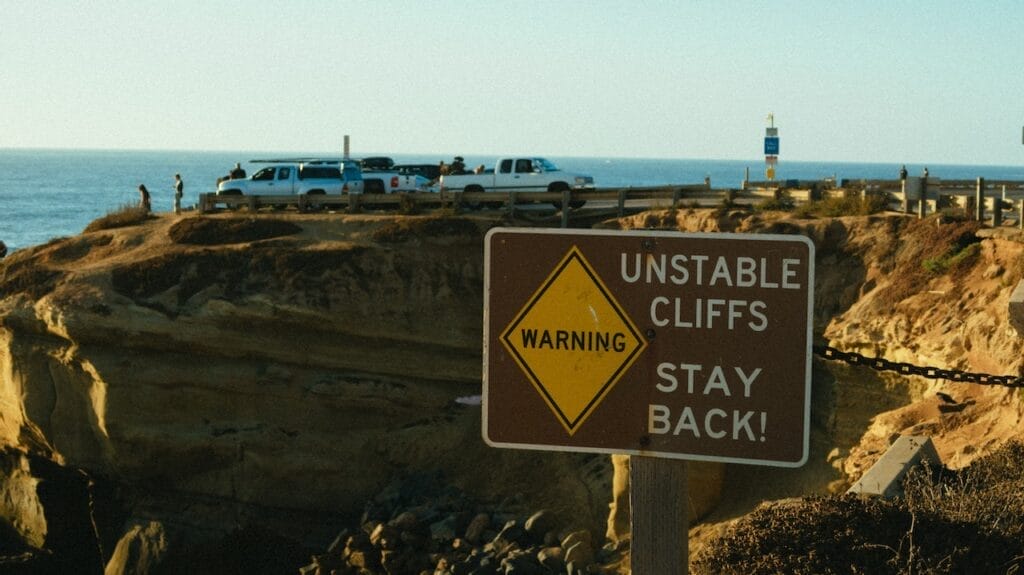
Cliff Jumping
While cliff jumping might seem like a thrilling way to cool off after a long hike, it can be extremely dangerous and lead to serious injuries or even death. Jumping from a cliff can result in fractures, dislocations, head trauma, and spinal injuries. To minimize the risk of injury, avoid tall cliff jumps, be sure it’s safe before you jump, and always observe others jumping before you decide to jump.
Flash Floods
Flash floods can occur suddenly during heavy rainfall, posing a serious risk to hikers near rivers and streams. These floods can cause rapid water level increases, making it difficult or impossible to cross waterways and potentially stranding hikers. To avoid flash floods, always check the weather forecast before hiking, and be prepared to turn back if conditions become dangerous. If you find yourself caught in a flash flood, immediately seek higher ground and wait for the water to recede.
Slips, Trips, and Falls
One of the most common injuries hikers face is slipping, tripping, or falling on uneven or slippery terrain. These accidents can result in cuts, bruises, sprains, and fractures. To minimize the risk of falls, always wear sturdy and appropriate footwear with good traction, use trekking poles for added stability, and take your time while navigating challenging sections of the trail.
Plan Your Hawaiian Adventure Today
Camper Vans | Surf Boards | Kayaks | Snorkel Gear | Itineraries | Campsites | More…
Dehydration and Heat Exhaustion
Dehydration and heat exhaustion are common issues for hikers in Oahu’s tropical climate. These conditions can cause dizziness, fatigue, nausea, and, in severe cases, heatstroke. To prevent dehydration and heat exhaustion, drink plenty of water throughout your hike, take frequent breaks in shaded areas, and wear loose, lightweight clothing.
Insect Bites and Stings
Insects like mosquitoes, bees, and wasps can be found along Oahu’s hiking trails, and their bites or stings can cause discomfort, allergic reactions, or infections. To protect yourself from insect bites and stings, apply insect repellent, wear long sleeves and pants, and avoid wearing strong fragrances that may attract insects.
Emergency Preparedness
In the event of an emergency, being prepared can make all the difference.
Carry a basic first-aid kit with supplies to treat common injuries, such as adhesive bandages, antiseptic wipes, pain relievers, and tweezers.
Additionally, bring a fully charged cell phone, whistle, and a map or GPS device to help you navigate and call for help if necessary.
By being aware of the potential hazards and following safety guidelines, you can enjoy Oahu’s beautiful hiking trails with waterfalls while minimizing the risk of injury or emergency situations.
Remember, always prioritize safety and make informed decisions while out on the trail.
Oahu offers a wealth of breathtaking hiking trails with waterfalls, providing visitors with unforgettable experiences and a chance to connect with nature.
By following our guide, you’ll be well-prepared to embark on your dream Oahu adventure and create memories that will last a lifetime.
Leptospirosis: Risks and Prevention
Leptospirosis is a bacterial infection that can be contracted through contact with contaminated water or soil.
While it has fewer than 1,000 U.S. cases per year, it’s still worth mentioning as it can be contracted while on Oahu Waterfall Hikes.
It is found worldwide, but it is more common in tropical regions, including Hawaii. Hikers in Oahu should be aware of the risks associated with leptospirosis and take steps to prevent exposure.
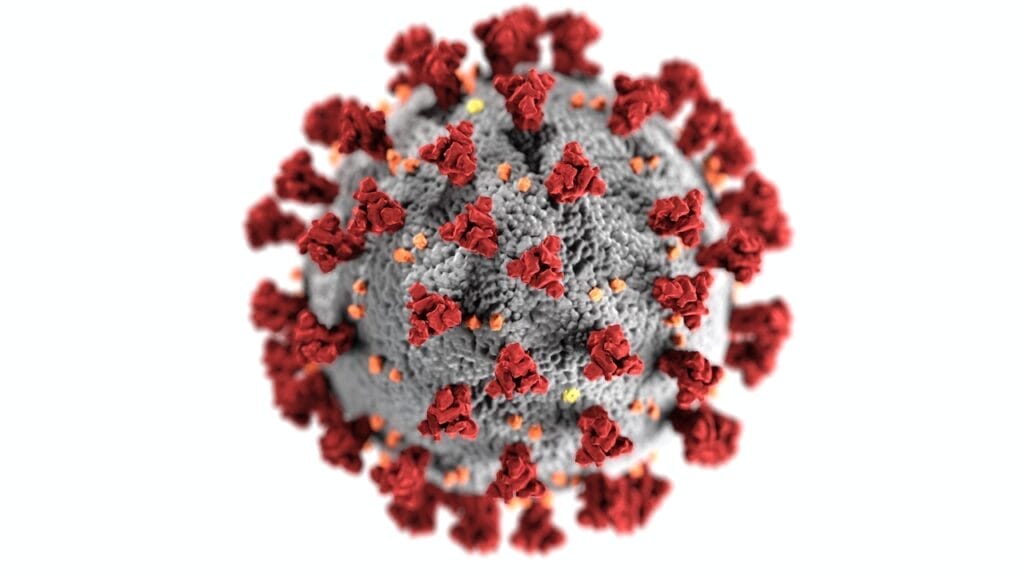
What is Leptospirosis?
Leptospirosis is caused by the bacteria Leptospira, which can be found in the urine of infected animals such as rodents, dogs, and livestock.
The bacteria can survive in water, soil, and mud, and humans can become infected through contact with these contaminated environments.
Infection can occur when bacteria enter the body through cuts, abrasions, or mucous membranes (eyes, nose, or mouth).
Symptoms of Leptospirosis
Symptoms of leptospirosis can range from mild to severe, and they typically begin 2-30 days after exposure. Some common symptoms include:
- High fever
- Chills
- Headache
- Muscle aches
- Nausea and vomiting
- Jaundice (yellowing of the skin and eyes)
- Red eyes
- Abdominal pain
- Diarrhea
- Rash
Plan Your Hawaiian Adventure Today
Camper Vans | Surf Boards | Kayaks | Snorkel Gear | Itineraries | Campsites | More…
Severe cases of leptospirosis can lead to kidney or liver failure, meningitis, and, in some instances, death.
If you suspect that you have been exposed to leptospirosis and are experiencing symptoms, seek medical attention immediately.
Preventing Leptospirosis While Hiking in Oahu
To minimize your risk of contracting leptospirosis while hiking in Oahu, follow these precautions:
- Keep water out of your mouth: Do not allow river or waterfall water from Hawaiian streams or rivers into your mouth.
- Cover open wounds: If you have any cuts or abrasions, cover them with waterproof bandages before hiking to prevent bacteria from entering your body.
- Wear protective gear: Wear waterproof shoes or boots, gloves, and long pants to minimize contact with potentially contaminated soil or water.
- Practice good hygiene: Wash your hands with soap and clean water after hiking, especially before eating or touching your face.
- Avoid touching your face while hiking: Try not to touch your eyes, nose, or mouth while hiking, as this can facilitate the entry of bacteria into your body.
By being aware of the risks associated with leptospirosis and taking appropriate precautions, you can safely enjoy the beautiful hiking trails in Oahu with waterfalls while minimizing the risk of infection.
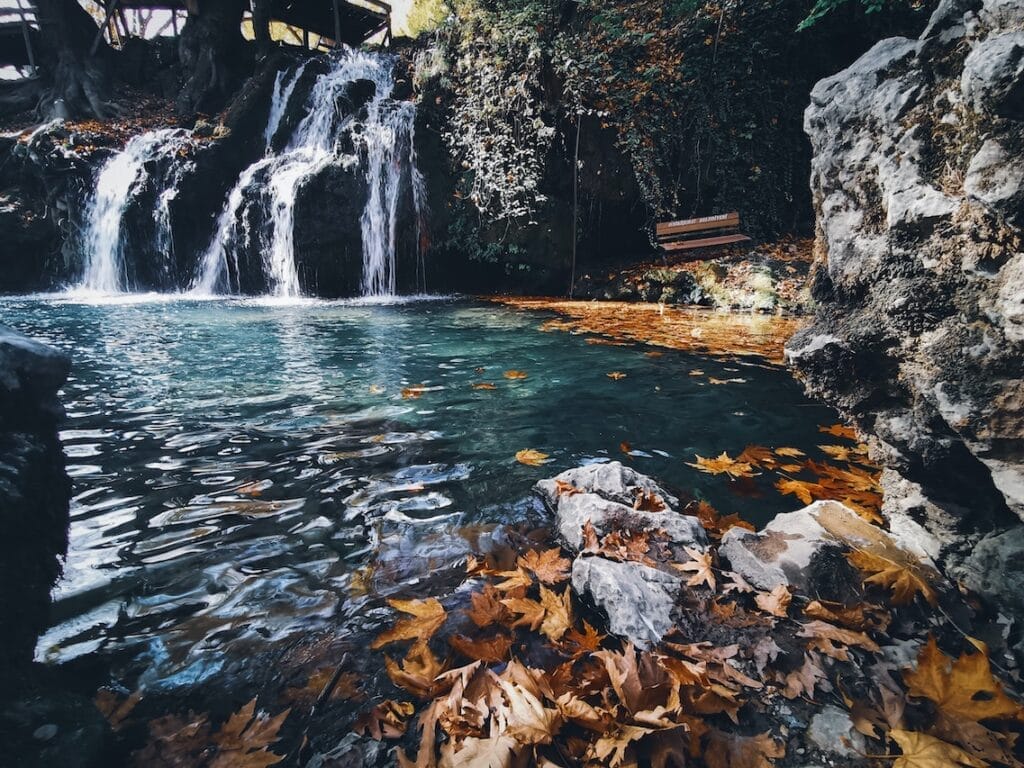
Waterfall Hikes in Oahu FAQs
Most hiking trails in Oahu do not require a permit. However, always check local regulations before heading out, as some trails may have specific requirements or restrictions.
Dogs are allowed on some trails, but not all. Always check the specific rules for each trail before bringing your furry friend along.
The time it takes to hike to a waterfall in Oahu varies depending on the trail’s length and difficulty. Most trails take between 1 to 3 hours round trip.
Swimming is allowed at some waterfalls, such as Maunawili Falls and Waimano Falls. However, always exercise caution, as rocks can be slippery and water levels may change suddenly.
While it is generally safe to hike alone in Oahu, it’s always best to hike with a buddy or join a guided tour. This ensures a safer experience and allows for assistance in case of emergencies.
What are your favorite hiking trails in Oahu with waterfalls? Share your experiences and recommendations in the comments below!


